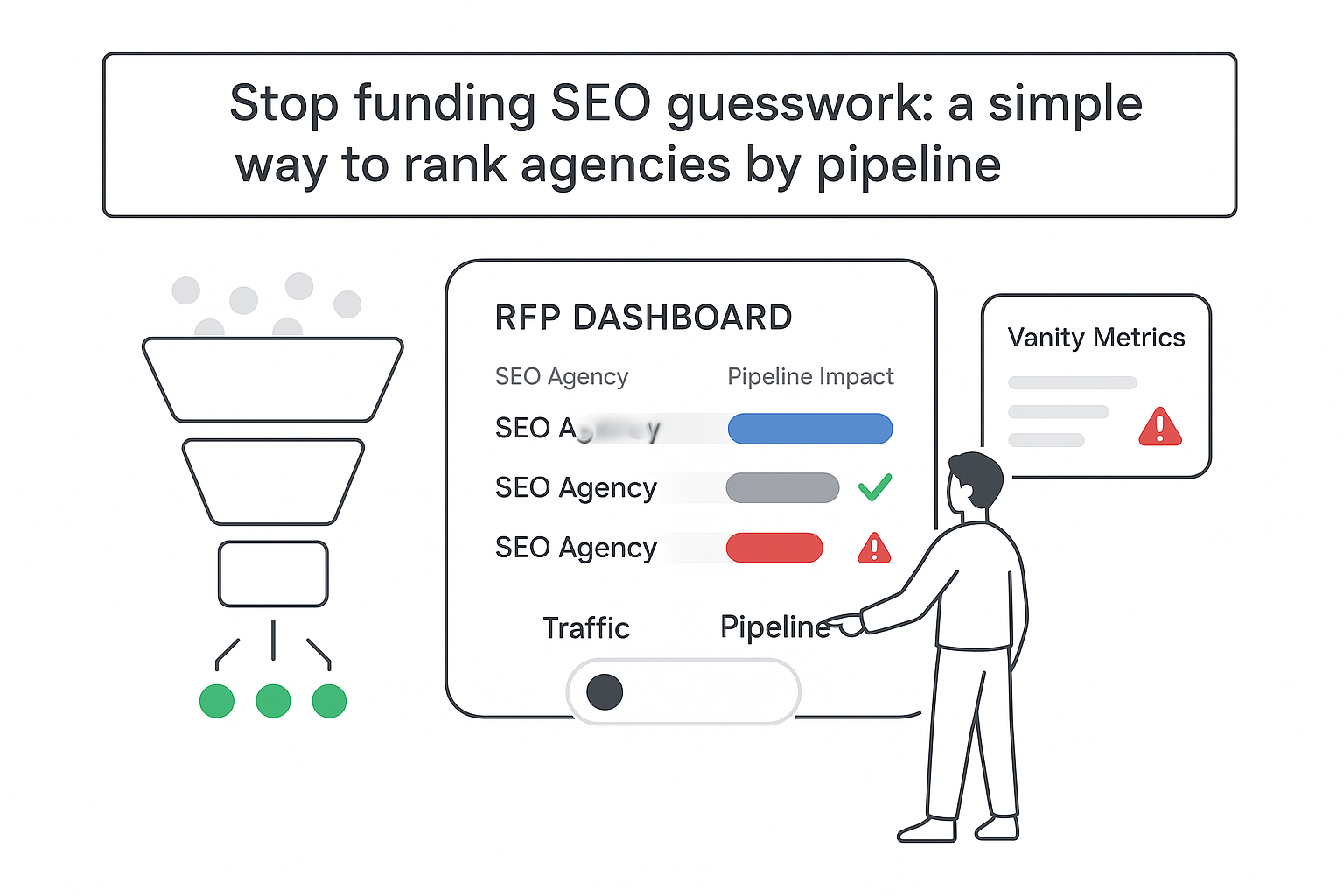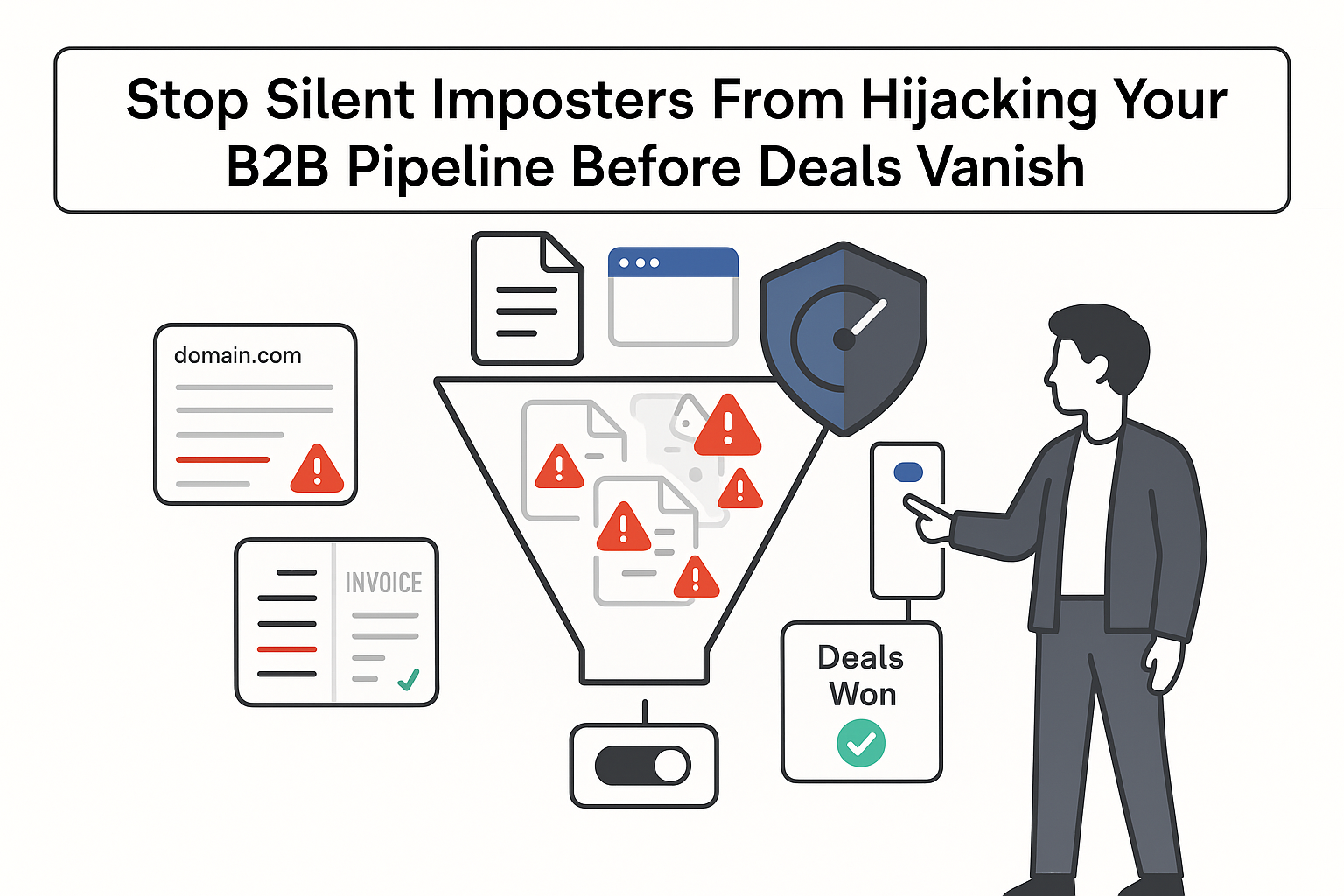Why personalization with vector databases matters in B2B
If I sell to serious buyers, I already know the old playbook is running out of steam: paid keeps getting pricier, generic nurture flows fade into the noise, and decision makers expect content that fits their context. The practical unlock I keep returning to is personalization with vector databases. By using vector search to match buyers to content and actions based on meaning - not just keywords or static rules - I can let sites, chat, emails, and sales tools adapt to intent as it changes. The result is personalization that is consistent, measurable, and operationally sane. For a primer, see Vector databases.
I avoid promising magic numbers, but the pattern is hard to ignore. When teams move from rules to embeddings, they often see lift in CTR, demo requests, and self-serve resolution because the system is matching on semantics and recency, not just strings. Industry research points in the same direction; for example, McKinsey’s 2021 Next in Personalization report found that companies excelling at personalization drive meaningfully higher revenue growth, and multiple 2023-2024 benchmarks from customer data platforms note conversion lifts when experiences are tailored. The caveat matters: impact depends on data quality, content depth, and how rigorously I measure changes.
How embeddings actually power personalization
At the core are embeddings - vectors that encode meaning. A text, image, or multi-modal model turns each item into a position in a shared space where similar items cluster and dissimilar ones separate. Similarity search then compares distances (for example, cosine similarity or dot product) to find the best matches fast. If this is new, start with Vector embeddings and common similarity measures.
What I embed in B2B settings
- Profiles: I aggregate firmographics, pages viewed, downloads, and recency into a user or account vector. It becomes a living fingerprint of interest.
- Content: I encode solution pages, case studies, docs, and pricing notes so the system can surface pieces that match intent, even when the words differ.
- Queries: I convert free-form search and chat questions into vectors to improve retrieval for Q&A, RAG, and knowledge base search.
Models I consider
- Text: Sentence Transformers or similar embedding models to capture semantic intent across titles, body copy, and queries.
- Vision or video: Encodings for screenshots, diagrams, or UI clips to match visual patterns. See context on handling unstructured data.
- Multi-modal: Newer models that let an image match a textual description or combine telemetry with copy - useful when buyers signal intent in mixed formats.
The practical payoff: a VP who binge-read solution A and the SOC write-up can be matched to the most relevant case study - even if they never typed those exact terms.
Where vectors reliably move the needle
I focus on surfaces where matching meaning to intent has a direct line to business outcomes. Typical lifts show up first in engagement metrics, then in pipeline quality and ACV as coverage expands.
- Buyer-aware content recommendations
- Inputs: Page views, session sequences, industry, CRM stage
- Approach: Content embeddings matched to profile vectors with recency weighting
- Metrics to watch: CTR on recommended assets, demo requests, influenced pipeline
- Next-best-action for SDRs
- Inputs: Email replies, call notes, website behavior, meeting outcomes
- Approach: Embeddings over unstructured notes plus account vectors for prioritization
- Metrics to watch: Meetings booked per rep, conversion from first touch to opportunity
- Personalized knowledge base search
- Inputs: User role, recent tickets, prior searches, doc corpus
- Approach: Dense retrieval with semantic reranking; optional RAG for grounded answers
- Metrics to watch: Self-serve resolution rate, time to answer, ticket deflection
- Intent-based ABM pages
- Inputs: Firmographics, third-party intent, onsite behavior
- Approach: Content blocks selected via similarity to account vectors; light rules for compliance
- Metrics to watch: Page engagement, form completion rate, opportunity creation
- Smart site search that acts like a guide
- Inputs: Queries, clickthroughs, past sessions, content vectors
- Approach: Query embeddings plus semantic reranking, tuned by feedback signals
- Metrics to watch: Search CTR, downstream conversions, reduced bounce rate
- Support deflection and triage
- Inputs: Tickets, product docs, release notes, chat logs
- Approach: Retrieval with embeddings; RAG to compose concise, grounded responses
- Metrics to watch: First contact resolution, average handle time, CSAT
A quick reality check: I can replicate some of this with rules, but rules get brittle. Embeddings adapt as new behavior arrives, which is why I see compounding gains when content and signals are rich and fresh.
Crafting the system: data, retrieval, and governance
There is the tech, and then there is the craft. I treat personalization with vectors like a living product with a tight feedback loop.
- Data strategy: I decide which signals matter and how fresh they must be. Recency weighting prevents last quarter’s click from outweighing this morning’s deep dive.
- Embedding quality: I pick models that fit my domain. I validate dimension sizes and recall with offline tests and quick human spot checks. If I sell globally, I account for multilingual content.
- Retrieval design: I use an approximate nearest-neighbor search index suitable for my traffic profile and blend dense vectors with sparse signals (for example, BM25 or filters) when B2B jargon or compliance keywords matter. Techniques like Hierarchical Navigable Small World graphs and product quantization help with speed and memory. For combining dense and sparse signals, consider Hybrid search.
- Real-time updates: I stream events to refresh user and content vectors as behavior lands. Stale vectors lead to stale recommendations; a reasonable cadence beats a perfect one I never run. Common pipelines use Kafka for streaming and Spark for batch or micro-batch processing.
- Governance: I treat PII with care. I pseudonymize IDs, restrict raw vector access, align to the right frameworks (for example, SOC 2 and GDPR), and log queries that touch sensitive segments.
- Measurement: I run A/B tests, not just dashboards. I look beyond clicks to influenced pipeline, demo-to-deal rate, and lift by segment. If data is thin, I start with directional tests and graduate to controlled experiments as volume grows.
The hidden assumption to avoid is that better embeddings alone win. In practice, the wins come from clear objectives, fresh data, and steady iteration across modeling, content, and UX.
Common pitfalls and practical fixes
Personalization with vectors is powerful and has sharp edges. I smooth them out by planning for the following:
- Cold start
- Problem: New users or content lack history, so results feel generic.
- Fix: Seed profiles with firmographics or role, blend metadata filters with dense search, and use lookalike neighbors from similar accounts. Precompute starter vectors for common roles.
- Drift and re-embedding cadence
- Problem: Language, products, and docs shift over time, degrading retrieval.
- Fix: Set refresh schedules by content type, track model versions and embedding dates, and A/B test model swaps before broad rollout.
- Bias and fairness
- Problem: Historical behavior can overweight certain industries or roles, narrowing exposure.
- Fix: Audit recommendation distributions across segments, add debiasing or reweighting in rerankers, and document known limits so stakeholders know when to intervene.
- Latency at scale
- Problem: Millisecond responses get harder as vectors and traffic grow.
- Fix: Tune index parameters per surface, cache top candidates, keep metadata filters index-friendly, and compress vectors where it does not harm recall.
- Privacy and compliance
- Problem: Personal signals can be sensitive.
- Fix: Avoid storing raw PII in embeddings, enforce data residency where required, mask sensitive fields in exports, and use role-based access with audit logs.
- Evaluation clarity
- Problem: Offline metrics (for example, recall@k) do not always map to business impact.
- Fix: Pair offline evaluation for iteration speed with online A/Bs for truth. Keep a shared scorecard so teams debate facts, not guesses.
Looking ahead: trends that raise the ceiling
- Multi-modal embeddings: Text, images, audio, and telemetry in one space so a product screenshot can match the right tutorial or a webinar snippet can match a whitepaper.
- Session-based personalization: Short-term session vectors capture micro-intent (for example, a sudden focus on security) without overwriting long-term profiles.
- On-device vectors for privacy: Lightweight models compute embeddings on the client and send only what is needed, reducing sensitive data in transit.
- RAG-based dynamic content: Retrieval-augmented generation assembles page blocks or answers from the freshest corpus, keeping responses grounded and current.
- Agentic workflows: Small agents coordinate search, summarization, and enrichment to prepare tailored briefs for specific personas from current signals and content.
- Vector-native analytics for LTV: Similarity finds high-value clusters, enabling LTV and ACV forecasts with fewer false positives than brittle segment rules.
I treat these as extensions, not prerequisites. Strong fundamentals beat flashy add-ons every time.
Strategic upside and closing perspective
The strategic upside for B2B service companies is durable when I learn from my own content and behavior data. Proprietary vectors become a moat competitors cannot easily copy. Better matching cuts wasted touches, shortens demo-to-deal, and improves pipeline quality from the same traffic. Because the system adapts on its own, my team spends more time on narrative and strategy instead of endless rule cleanup.
There is a useful paradox here: personalization feels complex, yet the real advantage comes from picking a few critical moments and doing them extremely well. I start narrow, measure carefully, refresh embeddings on a schedule that fits my content velocity, and respect privacy constraints. Do that, and the buyer experience starts to feel thoughtful and timely - and that is the kind of marketing and sales engine that compounds quarter after quarter.
If you want to put this into practice, explore a managed vector database with Try Free, check out the open-source core on Github, or experiment with semantic search using Deep Searcher.







.svg)